-
 Bitcoin
Bitcoin $107,467.9126
1.26% -
 Ethereum
Ethereum $2,447.5288
-0.12% -
 Tether USDt
Tether USDt $1.0005
0.00% -
 XRP
XRP $2.1921
0.13% -
 BNB
BNB $647.2897
0.50% -
 Solana
Solana $144.8627
-0.37% -
 USDC
USDC $0.9996
-0.03% -
 TRON
TRON $0.2732
0.10% -
 Dogecoin
Dogecoin $0.1652
-0.18% -
 Cardano
Cardano $0.5700
-2.87% -
 Hyperliquid
Hyperliquid $37.0274
-1.81% -
 Bitcoin Cash
Bitcoin Cash $484.6957
0.19% -
 Sui
Sui $2.7354
-2.19% -
 Chainlink
Chainlink $13.1727
-1.49% -
 UNUS SED LEO
UNUS SED LEO $8.9978
-0.04% -
 Stellar
Stellar $0.2421
-2.33% -
 Avalanche
Avalanche $17.5633
-3.51% -
 Toncoin
Toncoin $2.8476
-1.94% -
 Shiba Inu
Shiba Inu $0.0...01166
-0.56% -
 Litecoin
Litecoin $85.1071
0.09% -
 Hedera
Hedera $0.1502
-2.96% -
 Monero
Monero $310.2774
-1.64% -
 Dai
Dai $0.9999
-0.01% -
 Polkadot
Polkadot $3.3584
-1.88% -
 Ethena USDe
Ethena USDe $1.0003
-0.04% -
 Bitget Token
Bitget Token $4.4443
2.90% -
 Pi
Pi $0.6242
14.04% -
 Uniswap
Uniswap $6.9774
-2.86% -
 Pepe
Pepe $0.0...09535
-5.05% -
 Aave
Aave $256.7574
-3.35%
Is it credible if the morning star but the volume does not increase?
The morning star candlestick pattern suggests a potential bullish reversal, but its reliability increases with rising volume on the third candle.
Jun 26, 2025 at 08:22 am
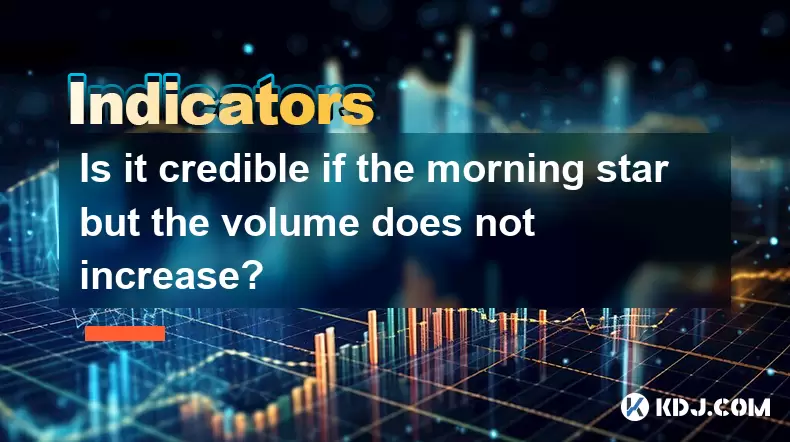
Understanding the Morning Star Candlestick Pattern
The morning star is a popular candlestick pattern used by traders to identify potential reversals in a downtrend. It consists of three candles: a large bearish candle, followed by a small-bodied candle (often a doji or spinning top), and then a large bullish candle that closes within the range of the first candle. This formation suggests that selling pressure is weakening and buyers may be entering the market.
However, one critical aspect that many traders consider when confirming this pattern is volume. Typically, traders expect an increase in volume during the third candle to confirm the strength of the reversal. When the morning star appears without a corresponding rise in trading volume, it raises concerns about the credibility of the signal.
Important: The absence of increased volume doesn't automatically invalidate the morning star, but it does require additional scrutiny.
The Role of Volume in Technical Analysis
Volume plays a crucial role in validating price action and chart patterns. In general, rising volume indicates strong participation from market players, which can give more weight to a technical signal. When analyzing the morning star pattern, traders often look for a surge in volume on the third candle to support the idea that bulls are stepping in with conviction.
If the volume remains flat or even declines during the formation of the morning star, it could suggest that the buying pressure is not strong enough to sustain a meaningful reversal. This lack of confirmation can lead to false signals and potentially misleading trade setups.
- Flat volume might indicate indecision among traders.
- Declining volume may point to weak interest in the bullish move.
- Rising volume typically strengthens the reliability of the pattern.
Therefore, while the morning star can still appear under low-volume conditions, its effectiveness as a reversal indicator diminishes without supporting volume.
Why Volume Might Not Increase During a Morning Star Formation
There are several reasons why the volume might not increase during the formation of a morning star:
- Market consolidation after a sharp downtrend may result in lower volume as participants take a pause.
- Institutional accumulation could occur subtly, without significant spikes in volume visible on retail charts.
- Lack of broad market interest might mean that only a few traders are participating in the reversal attempt.
- Timeframe discrepancies — sometimes, the daily chart shows a morning star, but the volume reflects lower timeframes where activity is muted.
These scenarios illustrate that the absence of volume growth doesn't always mean the pattern is unreliable. However, they also highlight the need for additional filters or tools to assess the validity of the signal.
How to Evaluate the Morning Star Without Rising Volume
When volume doesn't rise alongside the morning star, traders should adopt a more cautious approach. Here are some strategies to help evaluate the situation:
- Look at previous volume behavior — compare current volume levels with historical averages to determine if it's unusually low.
- Check for confluence with other indicators like moving averages, RSI, or Fibonacci retracement levels to strengthen the signal.
- Analyze higher timeframes to see if there's a broader trend or structure supporting the reversal.
- Monitor order flow and depth if possible, especially in markets where such data is available.
- Use risk management techniques such as tighter stop-loss placements or reduced position sizes when volume is low.
By incorporating these additional layers of analysis, traders can better judge whether a morning star without rising volume is worth acting upon.
Practical Steps for Trading the Morning Star With Low Volume
Here’s a practical guide to approaching this scenario:
- Step 1: Identify the morning star pattern clearly on your chart. Ensure all three candles meet the criteria.
- Step 2: Check the volume profile for the third candle. Compare it with the average volume over the past 10–20 periods.
- Step 3: Look for nearby support or resistance zones that align with the reversal attempt.
- Step 4: Confirm with at least one other indicator, such as RSI showing oversold conditions or MACD turning positive.
- Step 5: Consider waiting for a follow-through candle before entering the trade to filter out false signals.
- Step 6: Place a stop-loss just below the lowest point of the pattern to manage risk effectively.
This method helps traders avoid impulsive decisions based solely on the morning star pattern, especially when volume doesn’t confirm the reversal.
Frequently Asked Questions
Q: Can I trust a morning star pattern in crypto markets without volume confirmation?
A: While the morning star can appear in crypto markets without rising volume, it’s generally less reliable. Cryptocurrencies are highly volatile and often experience erratic volume patterns, so traders should use additional tools for validation.
Q: Is it possible for a morning star to form during a sideways market?
A: Yes, the morning star can appear during consolidation phases. However, the lack of a clear downtrend may reduce its predictive power. Traders should assess the broader context carefully.
Q: Should I ignore a morning star entirely if volume doesn’t increase?
A: No, you shouldn’t ignore it outright. Instead, treat it as a potential signal that requires further confirmation through price action, other indicators, or volume trends across multiple timeframes.
Q: How does the morning star differ from the hammer candlestick pattern?
A: The morning star is a three-candle pattern indicating a potential bottom reversal, while the hammer is a single candle with a long lower shadow suggesting rejection of lower prices. Both are bullish reversal signals, but they differ in structure and interpretation.
Disclaimer:info@kdj.com
The information provided is not trading advice. kdj.com does not assume any responsibility for any investments made based on the information provided in this article. Cryptocurrencies are highly volatile and it is highly recommended that you invest with caution after thorough research!
If you believe that the content used on this website infringes your copyright, please contact us immediately (info@kdj.com) and we will delete it promptly.
- Bitcoin's Market Dominance: A Virtual Asset Overview in '25
- 2025-06-26 12:25:13
- Ministry of Finance, Silver Coin, Golden Year: A Collector's Gem
- 2025-06-26 12:25:13
- Fiat Fading, Bitcoin at $107K, USD at Cycle Lows: What's Going On?
- 2025-06-26 13:25:12
- XRP Price Prediction: June 26th - Breakout Incoming?
- 2025-06-26 12:50:12
- Railway Protests and Strikes: A Global Perspective
- 2025-06-26 13:07:14
- Bitcoin, Ethereum, and Crypto ETFs: What's the Deal?
- 2025-06-26 13:25:12
Related knowledge
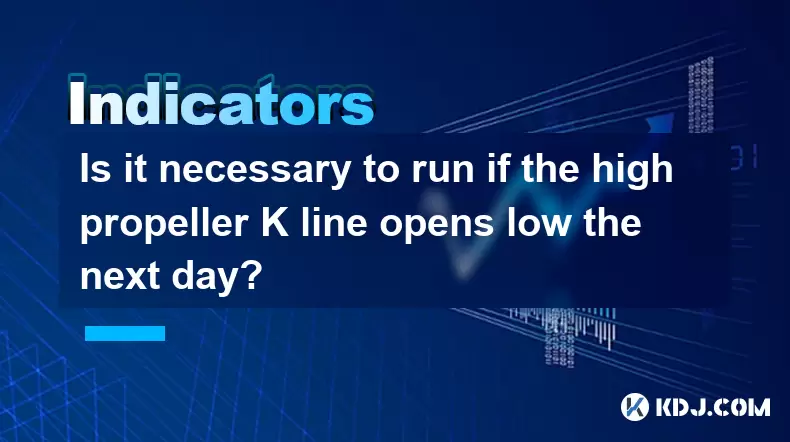
Is it necessary to run if the high propeller K line opens low the next day?
Jun 26,2025 at 01:42pm
Understanding the High Propeller K LineA high propeller K line is a candlestick pattern that typically indicates indecision in the market. It features a small real body with long upper and lower shadows, suggesting that both buyers and sellers are active. This pattern often appears during periods of volatility and can signal potential reversals or conti...
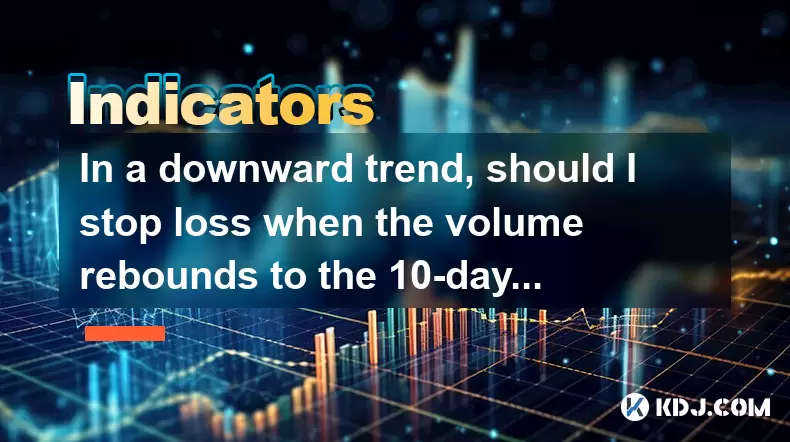
In a downward trend, should I stop loss when the volume rebounds to the 10-day line?
Jun 26,2025 at 11:43am
Understanding the 10-Day Volume Line in a Downward TrendIn cryptocurrency trading, volume is one of the most critical indicators for confirming price movements. The 10-day volume line refers to the average volume over the last 10 days and serves as a benchmark for traders to assess whether current volume levels are unusually high or low. When prices are...
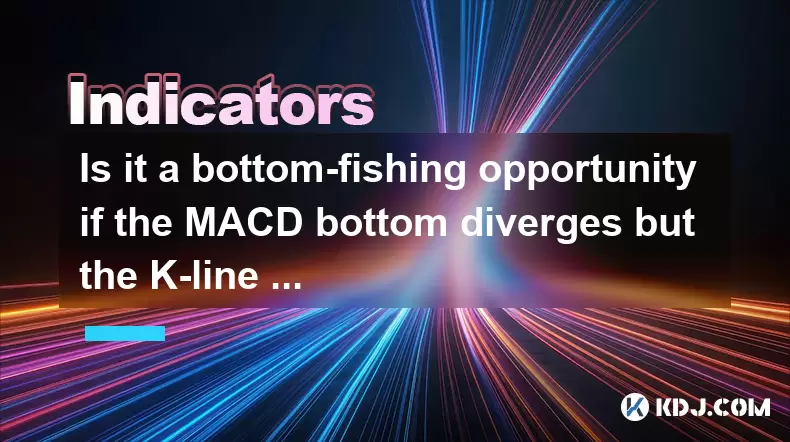
Is it a bottom-fishing opportunity if the MACD bottom diverges but the K-line is still falling?
Jun 26,2025 at 12:35pm
Understanding MACD Bottom Divergence in Cryptocurrency TradingIn cryptocurrency trading, MACD (Moving Average Convergence Divergence) bottom divergence is a technical signal that often suggests a potential reversal from a downtrend to an uptrend. This occurs when the price continues to make lower lows, but the MACD indicator forms higher lows. This disc...
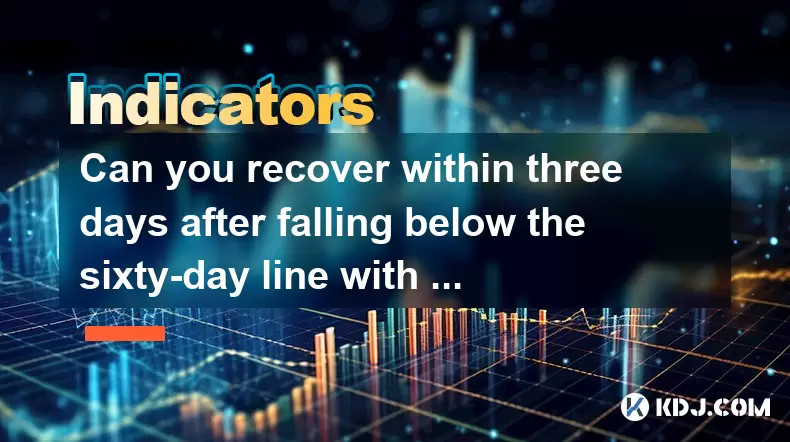
Can you recover within three days after falling below the sixty-day line with shrinking volume?
Jun 26,2025 at 01:50pm
Understanding the Sixty-Day Line in Cryptocurrency TradingIn cryptocurrency trading, the sixty-day line is a technical analysis tool used by traders to determine the long-term trend of an asset. It represents the average price of an asset over the last 60 days and acts as a dynamic support or resistance level. When the price of a cryptocurrency falls be...
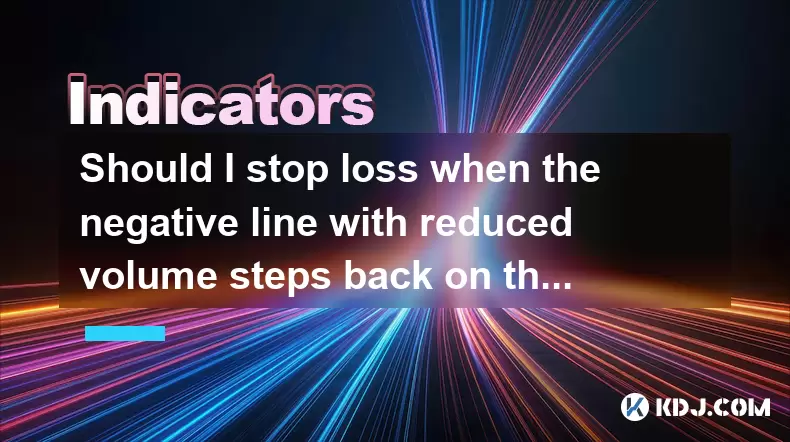
Should I stop loss when the negative line with reduced volume steps back on the 10-day line?
Jun 26,2025 at 05:42am
Understanding the 10-Day Moving Average in Cryptocurrency TradingIn cryptocurrency trading, the 10-day moving average is a short-term technical indicator used by traders to assess price momentum and potential reversals. It represents the average closing price of an asset over the last 10 days and helps smooth out price volatility. When prices approach o...
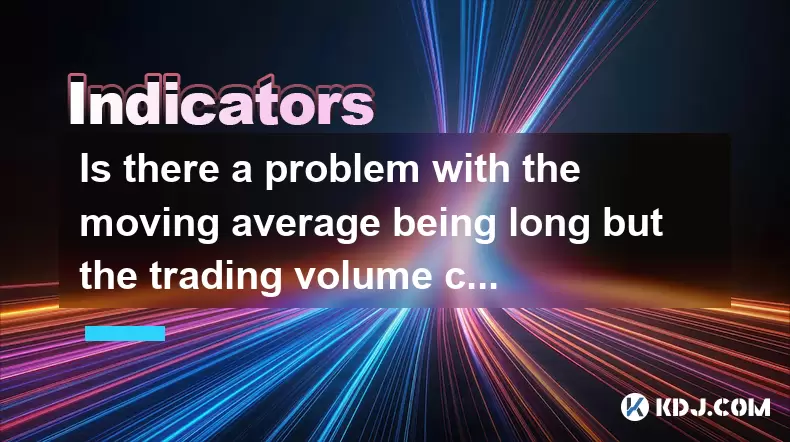
Is there a problem with the moving average being long but the trading volume continues to decline?
Jun 26,2025 at 02:42am
Understanding the Concept of Moving Averages in Cryptocurrency TradingIn cryptocurrency trading, moving averages are one of the most commonly used technical indicators. They help traders identify trends by smoothing out price data over a specific period. When the moving average is described as 'long,' it typically refers to longer timeframes such as the...

Is it necessary to run if the high propeller K line opens low the next day?
Jun 26,2025 at 01:42pm
Understanding the High Propeller K LineA high propeller K line is a candlestick pattern that typically indicates indecision in the market. It features a small real body with long upper and lower shadows, suggesting that both buyers and sellers are active. This pattern often appears during periods of volatility and can signal potential reversals or conti...

In a downward trend, should I stop loss when the volume rebounds to the 10-day line?
Jun 26,2025 at 11:43am
Understanding the 10-Day Volume Line in a Downward TrendIn cryptocurrency trading, volume is one of the most critical indicators for confirming price movements. The 10-day volume line refers to the average volume over the last 10 days and serves as a benchmark for traders to assess whether current volume levels are unusually high or low. When prices are...

Is it a bottom-fishing opportunity if the MACD bottom diverges but the K-line is still falling?
Jun 26,2025 at 12:35pm
Understanding MACD Bottom Divergence in Cryptocurrency TradingIn cryptocurrency trading, MACD (Moving Average Convergence Divergence) bottom divergence is a technical signal that often suggests a potential reversal from a downtrend to an uptrend. This occurs when the price continues to make lower lows, but the MACD indicator forms higher lows. This disc...

Can you recover within three days after falling below the sixty-day line with shrinking volume?
Jun 26,2025 at 01:50pm
Understanding the Sixty-Day Line in Cryptocurrency TradingIn cryptocurrency trading, the sixty-day line is a technical analysis tool used by traders to determine the long-term trend of an asset. It represents the average price of an asset over the last 60 days and acts as a dynamic support or resistance level. When the price of a cryptocurrency falls be...

Should I stop loss when the negative line with reduced volume steps back on the 10-day line?
Jun 26,2025 at 05:42am
Understanding the 10-Day Moving Average in Cryptocurrency TradingIn cryptocurrency trading, the 10-day moving average is a short-term technical indicator used by traders to assess price momentum and potential reversals. It represents the average closing price of an asset over the last 10 days and helps smooth out price volatility. When prices approach o...

Is there a problem with the moving average being long but the trading volume continues to decline?
Jun 26,2025 at 02:42am
Understanding the Concept of Moving Averages in Cryptocurrency TradingIn cryptocurrency trading, moving averages are one of the most commonly used technical indicators. They help traders identify trends by smoothing out price data over a specific period. When the moving average is described as 'long,' it typically refers to longer timeframes such as the...
See all articles
























































































